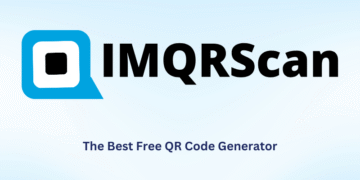What if the most critical factor in your company’s long-term success wasn’t on your financial statements?
Traditional financial metrics only tell part of the story. Today’s business landscape demands a deeper look at how organizations operate. This is where comprehensive evaluation frameworks come into play.
These frameworks examine environmental responsibility, social impact, and governance practices. They reveal risks and opportunities that numbers alone can’t show.
Companies embracing these practices often see improved performance and stakeholder trust. Investors increasingly use these criteria to make informed decisions.
This guide will show you how to implement these strategies effectively. You’ll learn to leverage data for better business outcomes.
Key Takeaways
- Comprehensive evaluation goes beyond traditional financial metrics
- Identifies hidden risks and opportunities in business operations
- Environmental, social, and governance factors are equally important
- Enhances long-term company performance and sustainability
- Critical for modern investment decisions and stakeholder trust
- Provides valuable data insights for strategic planning
- Becoming essential for regulatory compliance and industry leadership
Understanding ESG Analysis and Its Core Components
Modern business evaluation requires looking beyond traditional financial metrics. A comprehensive framework examines how organizations interact with their environment, society, and internal structures. This approach provides a complete picture of corporate health.
Three interconnected pillars form the foundation of this evaluation method. Each component addresses different aspects of organizational responsibility. Together, they create a holistic view of company operations.
Defining Environmental, Social, and Governance Factors
Environmental factors measure how businesses affect the natural world. Social elements examine relationships with people and communities. Governance focuses on internal structures and ethical standards.
These criteria help stakeholders make better choices. They reveal both strengths and areas needing improvement. The framework provides valuable insights beyond financial numbers.
The Environmental Pillar: Assessing Planetary Impact
This component evaluates a company’s ecological footprint. It looks at energy consumption patterns and waste management systems. Carbon emissions tracking is particularly important.
Resource management practices show operational efficiency. Companies reducing their environmental impact often save costs. They also position themselves as industry leaders.
Specific metrics include renewable energy usage percentages. Water conservation efforts and recycling rates matter too. Biodiversity protection measures complete the picture.
The Social Pillar: Evaluating Relationships and Responsibility
Social evaluation examines how companies treat their people. Employee working conditions and fair compensation are key factors. Diversity and inclusion programs receive close attention.
Community engagement initiatives demonstrate external responsibility. Customer satisfaction levels reflect service quality. Supply chain ethics reveal deeper operational values.
Human rights considerations extend across global operations. Companies must ensure fair treatment everywhere they operate. This builds trust with consumers and communities.
The Governance Pillar: Scrutinizing Internal Structures and Ethics
Governance examines how companies are led and controlled. Board diversity and structure influence decision-making quality. Executive compensation should align with performance.
Transparency in reporting builds stakeholder confidence. Ethical business practices prevent compliance issues. Strong oversight mechanisms reduce operational risks.
Shareholder rights protection is fundamental. Anti-corruption policies demonstrate commitment to integrity. These elements create a foundation for sustainable growth.
All three components work together synergistically. Environmental responsibility supports social well-being. Good governance ensures both receive proper attention.
Different industries may emphasize various aspects. Energy companies focus more on environmental factors. Service organizations might prioritize social elements.
The balanced approach provides the most accurate assessment. It helps identify opportunities for improvement. Companies can then develop targeted strategies for enhancement.
This comprehensive evaluation creates long-term value. It satisfies growing stakeholder expectations. Organizations embracing this framework position themselves for future success.
Why ESG Analysis is a Critical Business Imperative Today
Business success now depends on more than just profit margins and market share. Organizations face growing pressure from multiple directions to demonstrate responsible operations. This comprehensive evaluation approach has become essential for modern enterprises.
Three key forces drive this shift in corporate priorities. Consumer expectations, investor preferences, and regulatory requirements all push companies toward better practices. Understanding these drivers helps organizations stay competitive.
The Rise of Conscious Consumerism and Brand Accountability
Today’s shoppers research companies before making purchases. They want to support brands that align with their values. This trend has created new market dynamics.
Transparency has become a competitive advantage. Customers expect honest information about business operations. They reward companies that demonstrate ethical practices.
Social media amplifies both positive and negative stories. One misstep can damage reputation quickly. Strong frameworks help prevent these issues.
Brand loyalty now connects to corporate responsibility. Companies embracing these standards build deeper customer relationships. This creates lasting business value.
The Strategic Shift in Investor Preferences and Capital Allocation
Investment patterns have changed significantly in recent years. Major funds now screen companies using specific criteria. They look for organizations with strong performance metrics.
Pension funds and asset managers lead this movement. They recognize that responsible companies often deliver better returns. This perspective guides their allocation decisions.
Financial institutions developed specialized assessment tools. These tools evaluate various factors across operations. The results influence funding choices.
Capital flows toward companies demonstrating good management. Organizations with poor ratings face investment challenges. This financial pressure drives improvement.
Navigating the Evolving Regulatory and Compliance Landscape
Government requirements continue to expand worldwide. New standards emerge regularly across different regions. Companies must stay current with these changes.
The EU Taxonomy and CSRD represent major developments. These frameworks establish detailed reporting obligations. Non-compliance carries significant financial risks.
Proactive organizations gain competitive advantages. They adapt to new rules before they become mandatory. This forward-thinking approach reduces compliance costs.
Regulatory changes often signal broader market shifts. Early adoption positions companies as industry leaders. It also helps attract quality investors.
Comprehensive evaluation serves as a risk mitigation tool. It helps identify potential issues before they become problems. This protective function adds substantial business value.
The Multifaceted Benefits of Integrating ESG Analysis
Forward-thinking companies are realizing significant returns from their sustainability investments. These comprehensive evaluation methods deliver value across multiple business dimensions simultaneously.
Strengthening Stakeholder Trust and Enhancing Corporate Reputation
Companies that demonstrate genuine commitment build stronger connections with all stakeholder groups. Investors appreciate transparent reporting and ethical business practices.
Employees feel greater loyalty to organizations that value their well-being. Communities support companies that contribute positively to local development.
This trust translates into enhanced brand reputation and market positioning. Customers increasingly choose brands that align with their personal values.
Transparent communication about sustainability efforts creates competitive advantages. Organizations become preferred partners for suppliers and distributors.
Uncovering Operational Efficiencies and Driving Cost Savings
Environmental initiatives often reveal substantial efficiency opportunities. Energy reduction programs lower utility costs significantly over time.
Waste management improvements reduce disposal expenses and create recycling revenue. Resource optimization minimizes raw material consumption and associated costs.
These efficiency gains contribute directly to improved financial performance. Sustainable practices frequently lead to innovation in processes and products.
Companies discover new revenue streams through environmentally friendly offerings. Operational improvements enhance overall business agility and responsiveness.
Improving Risk Management and Ensuring Long-Term Resilience
Systematic evaluation helps identify potential environmental and social risks early. This proactive approach allows for better mitigation strategies.
Climate-related vulnerabilities become apparent through thorough assessment. Supply chain disruptions can be anticipated and prevented.
Strong governance practices reduce compliance issues and regulatory penalties. Ethical standards minimize reputation damage from misconduct incidents.
This comprehensive risk management approach builds organizational resilience. Companies withstand market fluctuations and external challenges more effectively.
Talent attraction improves as workers seek employers with strong values. Employee retention increases when people feel proud of their company’s impact.
Financial institutions view these companies as lower-risk investments. This perception often translates into better financing terms and conditions.
The combination of these benefits creates substantial long-term value. Organizations position themselves for sustainable growth and market leadership.
Implementing an Effective ESG Analysis Framework
Effective implementation begins with understanding what truly matters to your business. A structured approach ensures meaningful results that drive real change.
Companies must develop clear processes to capture valuable insights. This creates a foundation for sustainable growth and improved performance.
Conducting a Double Materiality Assessment
The double materiality process identifies critical environmental and social issues. It examines both internal business impact and external stakeholder concerns.
This assessment helps prioritize the most relevant factors for your organization. It ensures resources focus on areas with greatest significance.
Companies should engage diverse stakeholder groups during this process. Their input provides valuable perspective on material issues.
The results guide strategic planning and resource allocation. Organizations gain clarity on where to concentrate their efforts.
Establishing Key Performance Indicators and Metrics
Meaningful metrics transform abstract goals into measurable outcomes. They provide clear targets for improvement and accountability.
Specific indicators should align with business objectives and material issues. This creates direct connections between sustainability and performance.
Good metrics are SMART: Specific, Measurable, Achievable, Relevant, and Time-bound. They enable accurate tracking of progress over time.
Companies must establish realistic timelines for improvement initiatives. Regular review ensures continuous adaptation and enhancement.
Data Collection, Management, and Integration into Strategy
Reliable information forms the foundation of effective evaluation. Robust systems ensure accurate collection and management.
Technology solutions streamline data gathering and analysis processes. They provide valuable insights for strategic decision-making.
Integration involves embedding considerations throughout business operations. This creates alignment between sustainability and core strategies.
Quality assurance processes maintain data integrity and reliability. They support transparent reporting and stakeholder confidence.
Continuous improvement adapts the framework to changing conditions. Organizations remain responsive to new opportunities and challenges.
Overcoming Common Challenges in ESG Analysis
Many organizations face unexpected obstacles when implementing comprehensive evaluation frameworks. These hurdles can slow progress and diminish returns on sustainability investments.
Understanding common pitfalls helps companies develop effective strategies. Proactive planning turns potential setbacks into opportunities for improvement.
Addressing Data Availability, Quality, and Standardization Hurdles
Reliable information forms the foundation of meaningful assessment. Many companies struggle with inconsistent data collection methods.
Standardization issues create comparison difficulties across departments. Verification processes ensure accuracy in reported metrics.
Robust systems transform raw numbers into actionable insights. Technology solutions automate gathering and validation tasks.
Third-party verification adds credibility to sustainability reporting. Clear documentation supports transparent stakeholder communication.
Managing the Costs and Resource Allocation for ESG Initiatives
Budget constraints often limit sustainability program scope. Smart resource allocation maximizes impact while controlling expenses.
Return on investment calculations justify necessary expenditures. Long-term value frequently outweighs initial implementation costs.
Phased approaches allow for gradual capability building. Priority-based spending focuses on material issues first.
Smaller companies benefit from collaborative partnerships. Shared resources reduce individual financial burdens significantly.
Achieving Meaningful Cultural Integration and Executive Buy-In
Cultural transformation requires commitment from all organizational levels. Leadership endorsement drives successful implementation.
Change management strategies address resistance effectively. Clear communication explains the business case for sustainability.
Employee engagement programs foster ownership and participation. Training builds necessary skills across departments.
Performance incentives align individual goals with corporate objectives. Regular progress updates maintain momentum and focus.
External experts provide valuable guidance and support. Their experience helps navigate complex implementation challenges.
Continuous improvement adapts strategies to evolving conditions. Organizations build resilience through ongoing refinement.
Measuring Performance: ESG Ratings, Risk Scores, and Benchmarks
Accurate measurement transforms sustainability efforts into actionable business intelligence. Companies need reliable tools to track progress and compare results. These evaluation systems provide clear insights into corporate responsibility.
Decoding ESG Risk Ratings and Absolute Measures of Risk
Morningstar Sustainalytics offers a comprehensive risk assessment framework. Their system evaluates companies across five distinct risk levels. These range from negligible to severe risk categories.
The methodology examines exposure to industry-specific material issues. It also assesses how well organizations manage those risks. The management gap shows the difference between current and optimal practices.
Absolute risk measures enable direct peer comparisons. Companies can see where they stand against industry standards. This approach provides clear benchmarks for improvement.
Risk decomposition breaks down overall scores into components. Management scores evaluate the quality of policies and implementation. This detailed view helps identify specific areas needing attention.
Understanding the Difference Between ESG Performance and ESG Rating
Performance measures actual implementation of environmental and social policies. It reflects how well a company executes its sustainability strategies. This internal focus drives operational improvements.
Ratings compare this performance against industry standards. They provide relative positioning within competitive landscapes. Investors use these comparisons for informed decision-making.
Historical data enables trend analysis over time. Companies can track their progress and identify patterns. This long-term view supports strategic planning and goal setting.
Controversies significantly impact overall ratings. They often indicate management shortcomings or oversight failures. Addressing these issues promptly protects corporate reputation.
Utilizing Sustainability Indexes for Industry Benchmarking
Major indexes like DJSI and MSCI provide valuable benchmarking tools. They rank companies based on comprehensive performance assessments. These rankings serve as important reference points.
Investors use these indexes for portfolio construction decisions. They help identify leaders in sustainability practices. This information guides capital allocation strategies.
Different rating systems employ various methodologies. Understanding these differences is crucial for accurate interpretation. Companies should consider multiple sources for balanced perspectives.
Benchmarking against industry peers reveals competitive positioning. It highlights strengths and identifies improvement opportunities. This external context complements internal performance tracking.
Regular monitoring ensures companies stay current with evolving standards. It supports continuous improvement and adaptation to market changes. This proactive approach maintains competitive advantage.
The Role of ESG Reporting and Disclosure Frameworks
Clear communication builds trust in today’s business environment. Organizations now share their sustainability journey through detailed reports. These documents provide valuable insights into corporate responsibility.
Transparent disclosure helps stakeholders make informed choices. It shows commitment to ethical practices and long-term thinking. Companies benefit from improved reputation and investor confidence.
An Overview of Major Frameworks: CSRD, ESRS, and SFDR
The Corporate Sustainability Reporting Directive (CSRD) expands previous rules. It covers more companies and requires deeper content. Implementation follows a phased timeline from 2024.
European Sustainability Reporting Standards (ESRS) provide detailed guidance. They apply across various industries and sectors. These standards ensure consistent and comparable information.
The Sustainable Finance Disclosure Regulation (SFDR) affects financial products. It requires transparency about sustainability characteristics. This helps investors understand environmental and social impacts.
The Value of a Sustainability Report for Transparency and Communication
Comprehensive reports demonstrate corporate accountability. They show how companies manage environmental and social issues. Stakeholders gain clear understanding of business practices.
These documents highlight both achievements and challenges. They provide context for performance metrics and goals. Transparent communication builds stronger stakeholder relationships.
Reports serve as valuable tools for internal improvement. They help identify areas needing attention and resources. Organizations can track progress over time effectively.
The Growing Importance of Third-Party Assurance and Audits
Independent verification adds credibility to sustainability claims. Third-party assurance follows international standards like ISAE 3000. For greenhouse gas statements, ISAE 3410 provides specific guidance.
Limited assurance offers moderate confidence in reported information. Reasonable assurance provides higher confidence levels. The CSDR introduces mandatory limited assurance requirements.
Preparation involves thorough documentation and process review. Companies should address common findings proactively. Digital tagging requirements ensure machine-readable reports.
This external validation enhances report reliability significantly. It gives stakeholders confidence in the presented information. Organizations benefit from improved trust and credibility.
The Evolving Future of ESG Analysis
Tomorrow’s business landscape will demand smarter approaches to corporate responsibility evaluation. Emerging technologies and global trends are reshaping how organizations measure their impact. Companies must prepare for these changes to maintain competitive advantage.
The Impact of Artificial Intelligence and Machine Learning on Data Analysis
Advanced technologies are revolutionizing how companies gather sustainability information. AI systems can process vast amounts of data automatically. This provides deeper insights into environmental and social performance.
Machine learning algorithms identify patterns humans might miss. They can predict potential risks before they become serious issues. This proactive approach helps companies avoid problems.
Natural language processing scans news and social media. It detects emerging concerns that could affect corporate reputation. These tools provide early warning systems for management teams.
Automated monitoring tracks energy usage and emissions continuously. It generates real-time reports for better decision-making. This technology makes sustainability management more efficient.
Anticipating Tighter Regulations and Global Standardization
Regulatory frameworks are moving toward worldwide consistency. Governments recognize the need for comparable sustainability metrics. This trend will continue accelerating in coming years.
New reporting standards will demand more detailed disclosures. Companies must prepare for increased transparency requirements. Early adoption creates strategic advantages.
Climate-related financial risks will receive greater attention. Regulators want better information about environmental impacts. This focus will shape future investment decisions.
Global harmonization simplifies compliance for multinational corporations. It reduces the burden of meeting different regional standards. This standardization benefits both companies and investors.
ESG Analysis as a Cornerstone of Long-Term Value Creation
Comprehensive evaluation frameworks are becoming fundamental to business strategy. They help balance profitability with sustainable practices. This approach creates lasting value for all stakeholders.
Forward-thinking companies integrate these considerations into core operations. They recognize that responsible practices drive financial performance. This mindset shift transforms how organizations operate.
Investment approaches increasingly prioritize sustainability criteria. Investors seek companies demonstrating strong environmental and social governance. This trend reflects changing market expectations.
Emerging methodologies will improve measurement accuracy. Better metrics provide clearer pictures of corporate impact. These advancements support more informed business decisions.
Nature-related risks and biodiversity concerns are gaining importance. Companies must address these issues in their sustainability strategies. This expanded focus reflects broader environmental awareness.
The evolution from compliance requirement to strategic advantage continues. Organizations that embrace this change will lead their industries. They will create sustainable value for generations to come.
Conclusion
Forward-looking businesses now see responsible evaluation as essential for lasting success. It strengthens reputation, builds stakeholder trust, and draws investor interest.
Strong practices offer clear financial advantages and reduce operational risks. They help companies meet rising regulatory demands and public expectations.
Effective frameworks turn data into actionable insights for better decisions. They highlight both challenges and growth opportunities across all operations.
Adopting these methods early positions firms for leadership. It moves beyond basic compliance to drive real innovation and value.
Begin by assessing material issues and setting measurable goals. Continuous improvement ensures ongoing relevance and competitive edge.
FAQ
What is ESG analysis?
ESG analysis is a method for evaluating a company’s performance and risk based on environmental, social, and governance criteria. It helps stakeholders understand how a business manages its impact on the planet, people, and internal ethics.
Why is ESG analysis important for businesses today?
It is crucial because it aligns with growing consumer awareness, investor demands, and regulatory requirements. Companies that prioritize these factors often see benefits like stronger trust, better risk management, and long-term resilience.
How do companies measure their ESG performance?
Businesses use key performance indicators, sustainability metrics, and frameworks like CSRD or ESRS. They collect data, set targets, and often seek third-party assurance to ensure accuracy and transparency in their reporting.
What are common challenges in implementing ESG analysis?
Challenges include data quality issues, high costs, and the need for cultural change within an organization. Standardization of metrics and securing executive support are also frequent hurdles.
How does ESG analysis affect investment decisions?
Investors use this evaluation to identify companies with sustainable practices and lower risks. Strong performance can attract capital, improve valuations, and signal stability, influencing where money is allocated.
What is the difference between an ESG rating and ESG performance?
Performance refers to a company’s actual actions and outcomes in environmental, social, and governance areas. A rating is an external score given by agencies that assess and compare that performance against standards or peers.
Are there global standards for ESG reporting?
Yes, frameworks such as the Corporate Sustainability Reporting Directive (CSRD) and Sustainable Finance Disclosure Regulation (SFDR) provide guidelines. These help ensure consistency, comparability, and reliability in disclosures across regions.
How is technology changing ESG analysis?
Artificial intelligence and machine learning are improving data collection, analysis, and predictive capabilities. These tools help businesses manage large datasets, identify trends, and make more informed strategic decisions efficiently.







